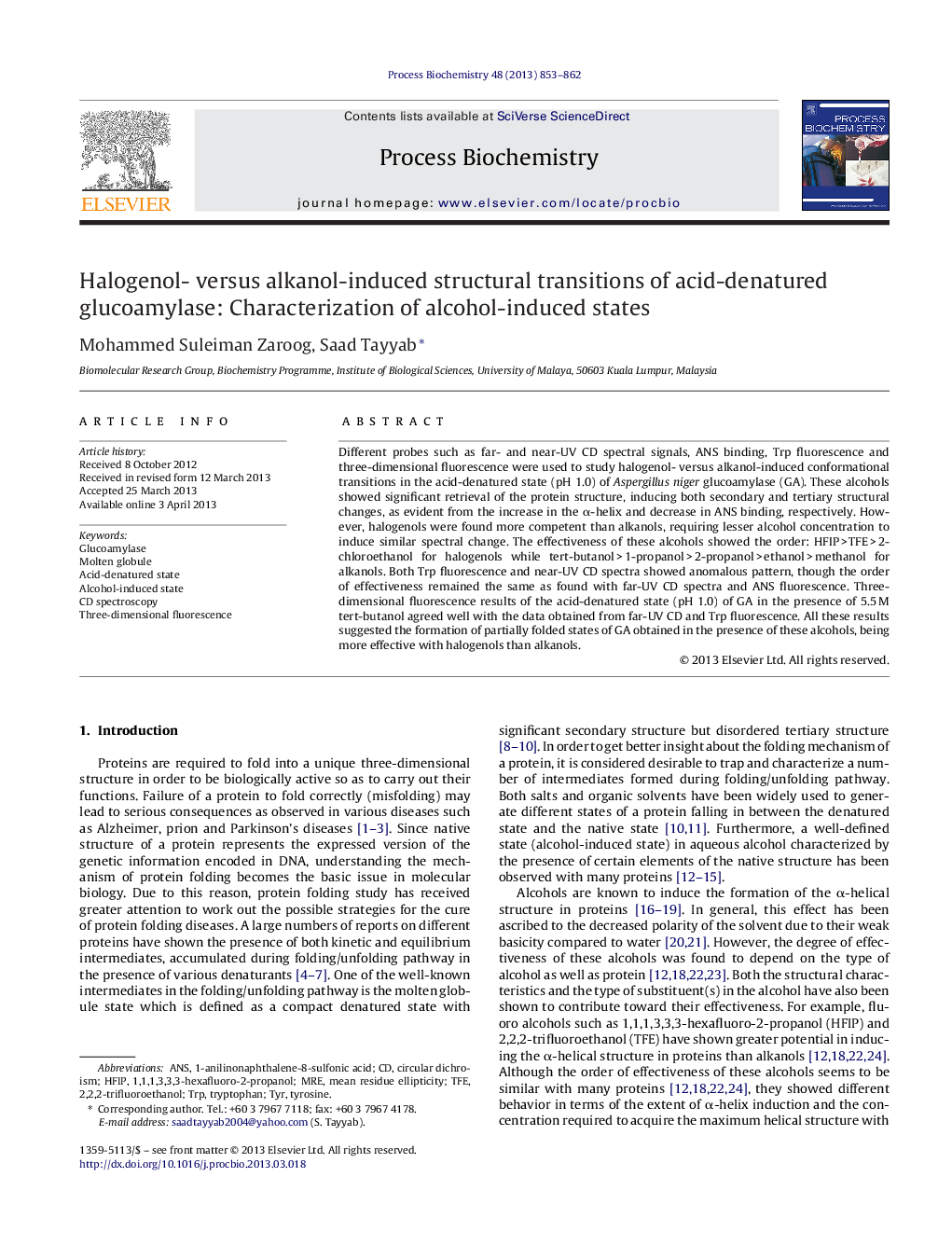| Article ID | Journal | Published Year | Pages | File Type |
|---|---|---|---|---|
| 34735 | Process Biochemistry | 2013 | 10 Pages |
•First report showing alcohol-induced refolding of the acid-denatured glucoamylase.•Effectiveness of halogenols and alkanols in inducing the partially folded states.•Characterization of the alcohol-induced states of glucoamylase.•Use of various spectral probes to study the refolding phenomenon.
Different probes such as far- and near-UV CD spectral signals, ANS binding, Trp fluorescence and three-dimensional fluorescence were used to study halogenol- versus alkanol-induced conformational transitions in the acid-denatured state (pH 1.0) of Aspergillus niger glucoamylase (GA). These alcohols showed significant retrieval of the protein structure, inducing both secondary and tertiary structural changes, as evident from the increase in the α-helix and decrease in ANS binding, respectively. However, halogenols were found more competent than alkanols, requiring lesser alcohol concentration to induce similar spectral change. The effectiveness of these alcohols showed the order: HFIP > TFE > 2-chloroethanol for halogenols while tert-butanol > 1-propanol > 2-propanol > ethanol > methanol for alkanols. Both Trp fluorescence and near-UV CD spectra showed anomalous pattern, though the order of effectiveness remained the same as found with far-UV CD spectra and ANS fluorescence. Three-dimensional fluorescence results of the acid-denatured state (pH 1.0) of GA in the presence of 5.5 M tert-butanol agreed well with the data obtained from far-UV CD and Trp fluorescence. All these results suggested the formation of partially folded states of GA obtained in the presence of these alcohols, being more effective with halogenols than alkanols.
